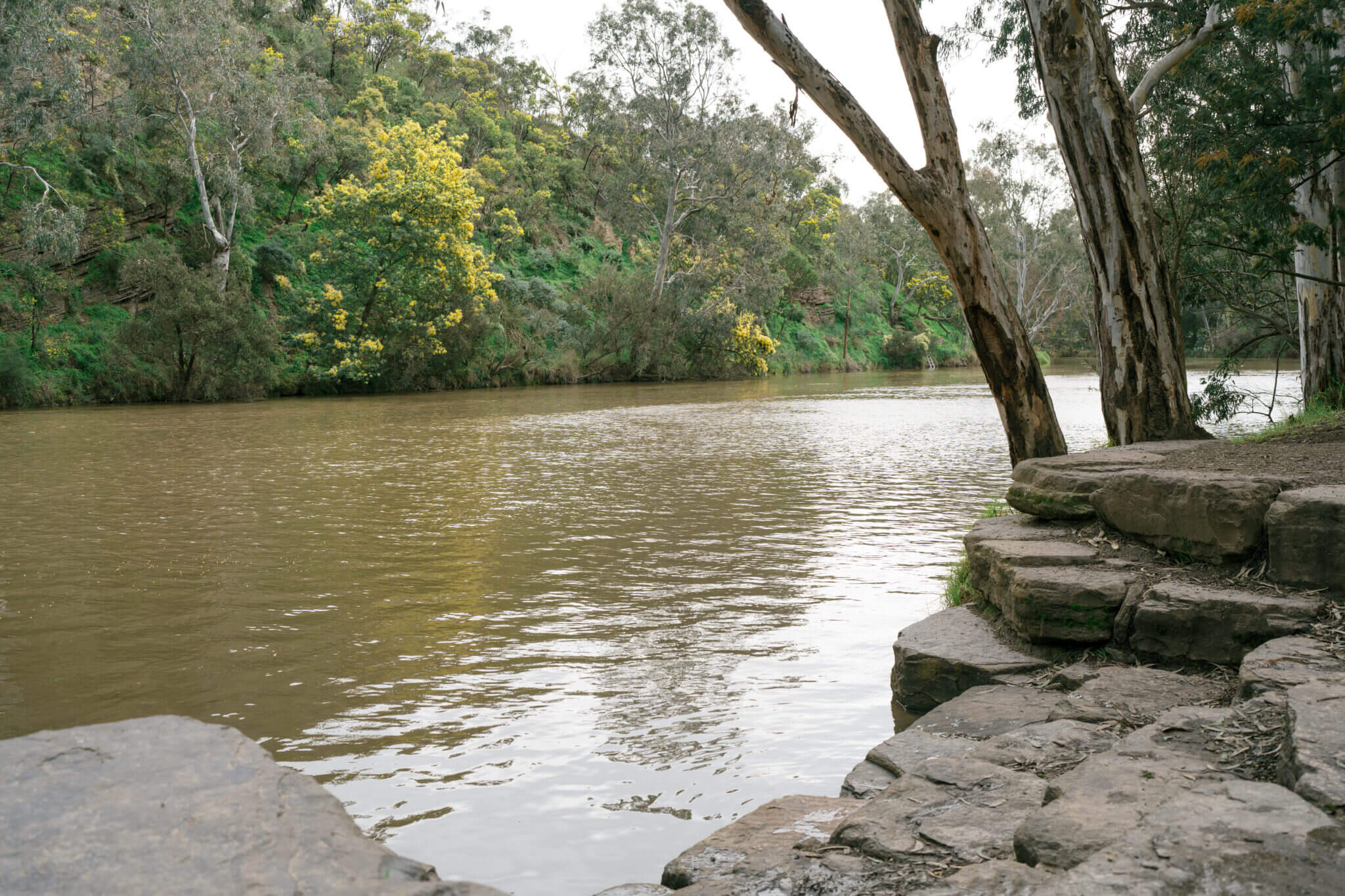




, By Carolyn
This is not a love story. It’s a story of grief, despair and devastation.
And it’s a story of how a small group of caring, committed citizens can demand action and make a difference.
Weeks after the Birrarung flood waters have receded, the trees are still festooned with plastic while the waters below are littered with plastic bottles, tennis balls and bags of dog shit.
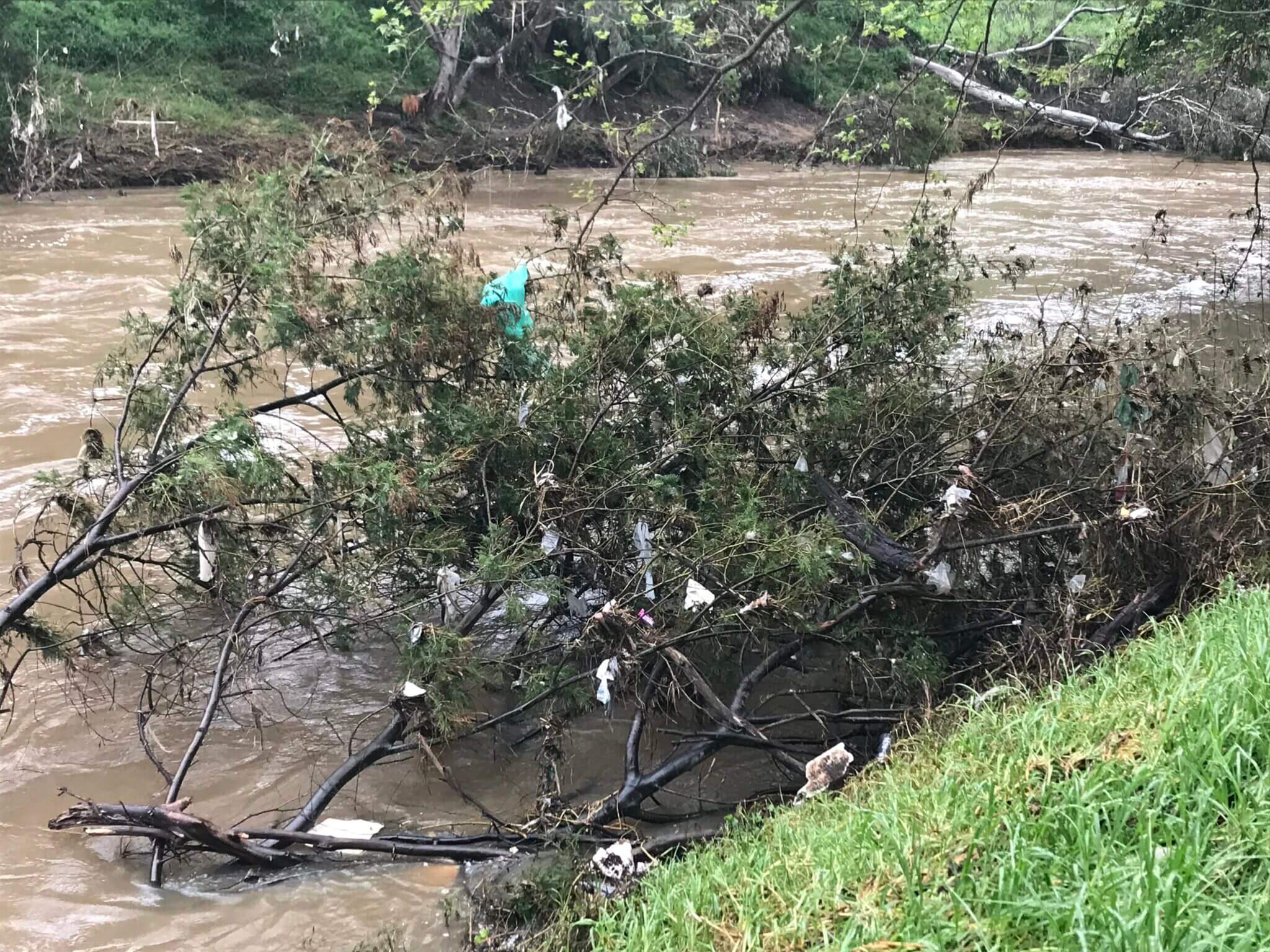
Red Bull. Ribena. Victoria Bitter. These are just a few of the brands on the empty bottles and cans congregating on the banks of a neglected river.
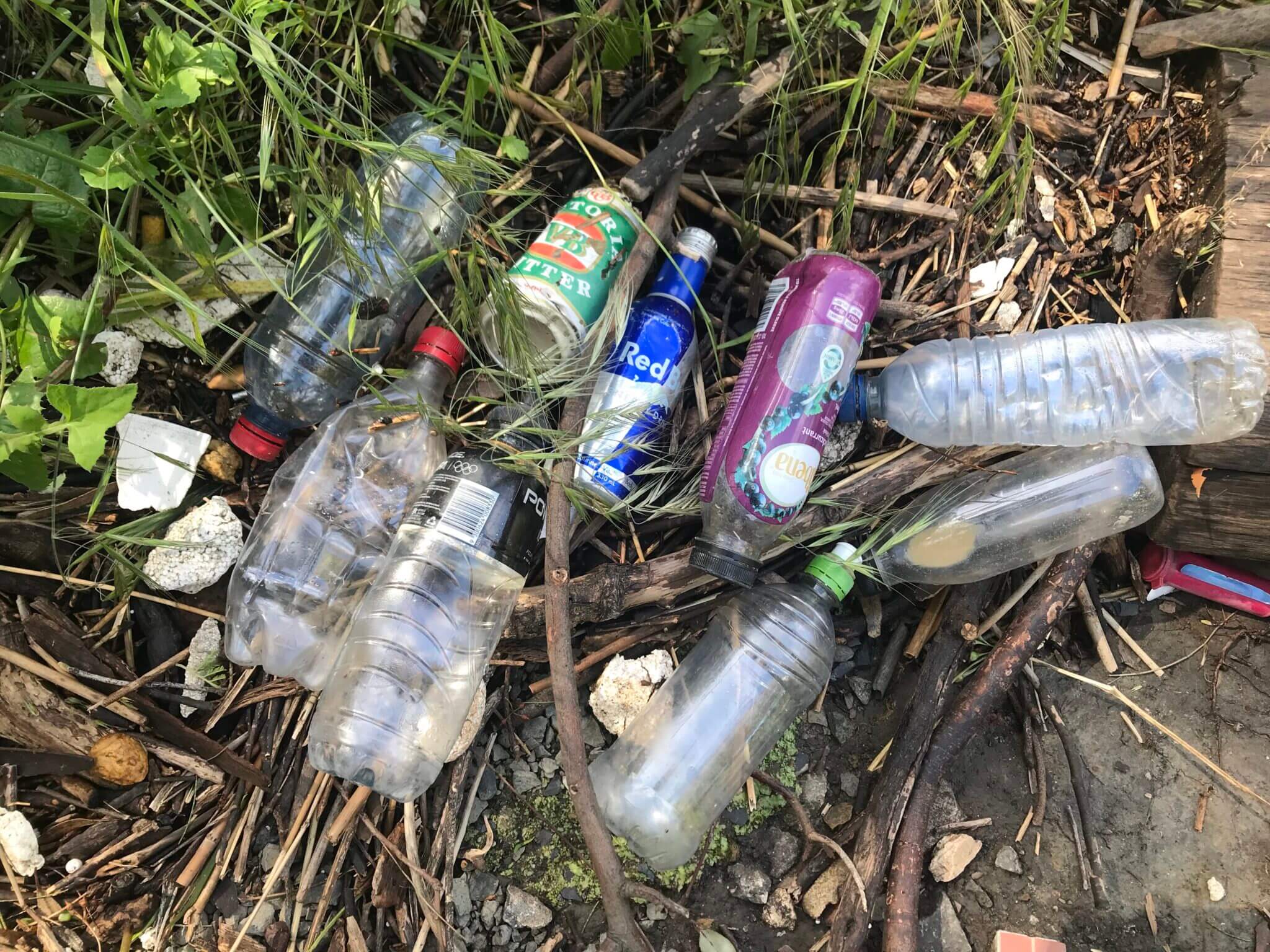
A chair. A couch. A bicycle. A blue drum. A red plastic road bollard.
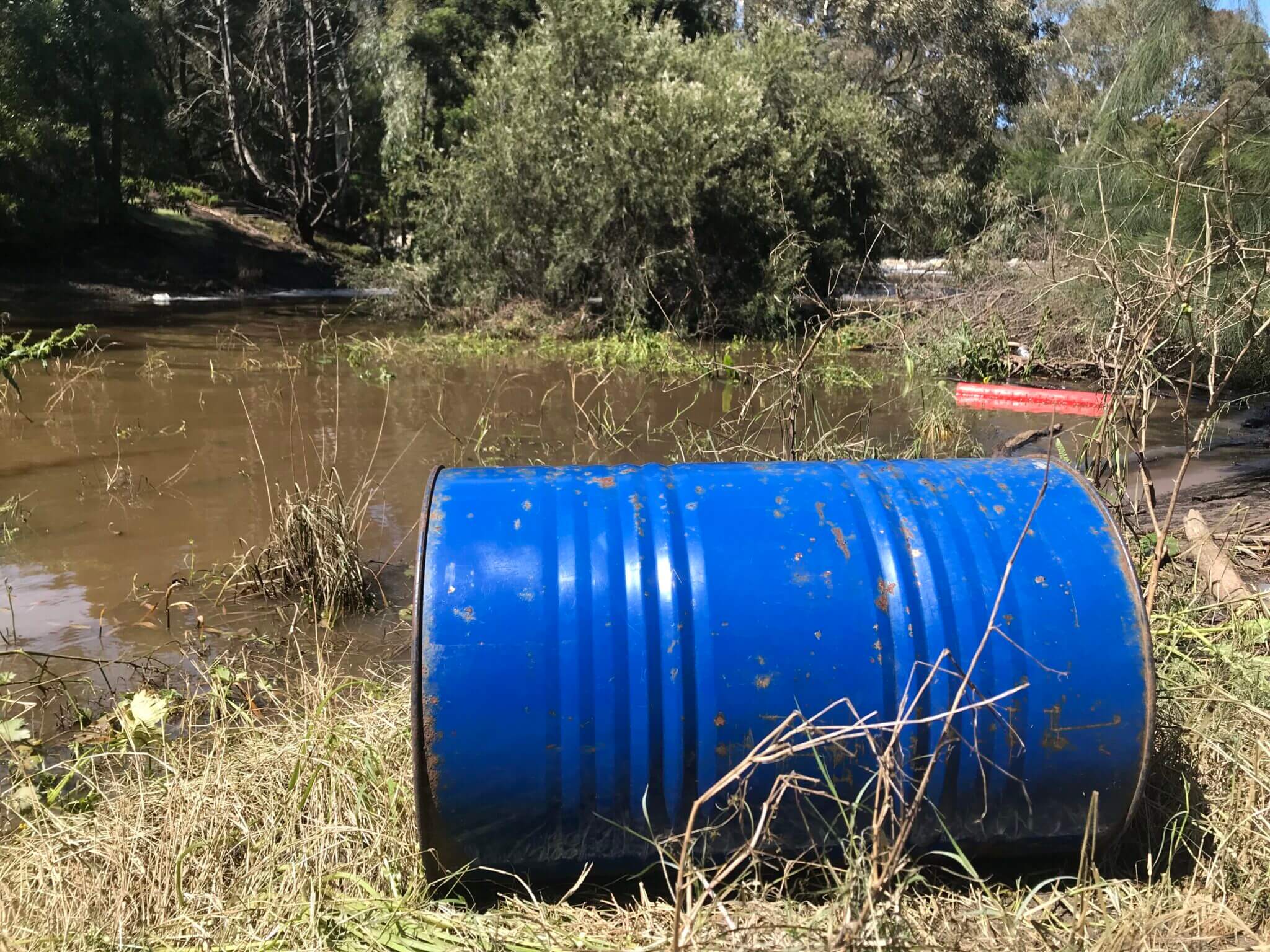
In this moment, the river, usually a source of solace for me, has become a source of despair. It takes all my will not to slump to the ground, defeated.
Thankfully my Love Stories collaborator Christine McFetridge is with me, so I muster up some composure. Looking at Christine, I can see she feels the same. It’s comforting to have a companion to share the grief.
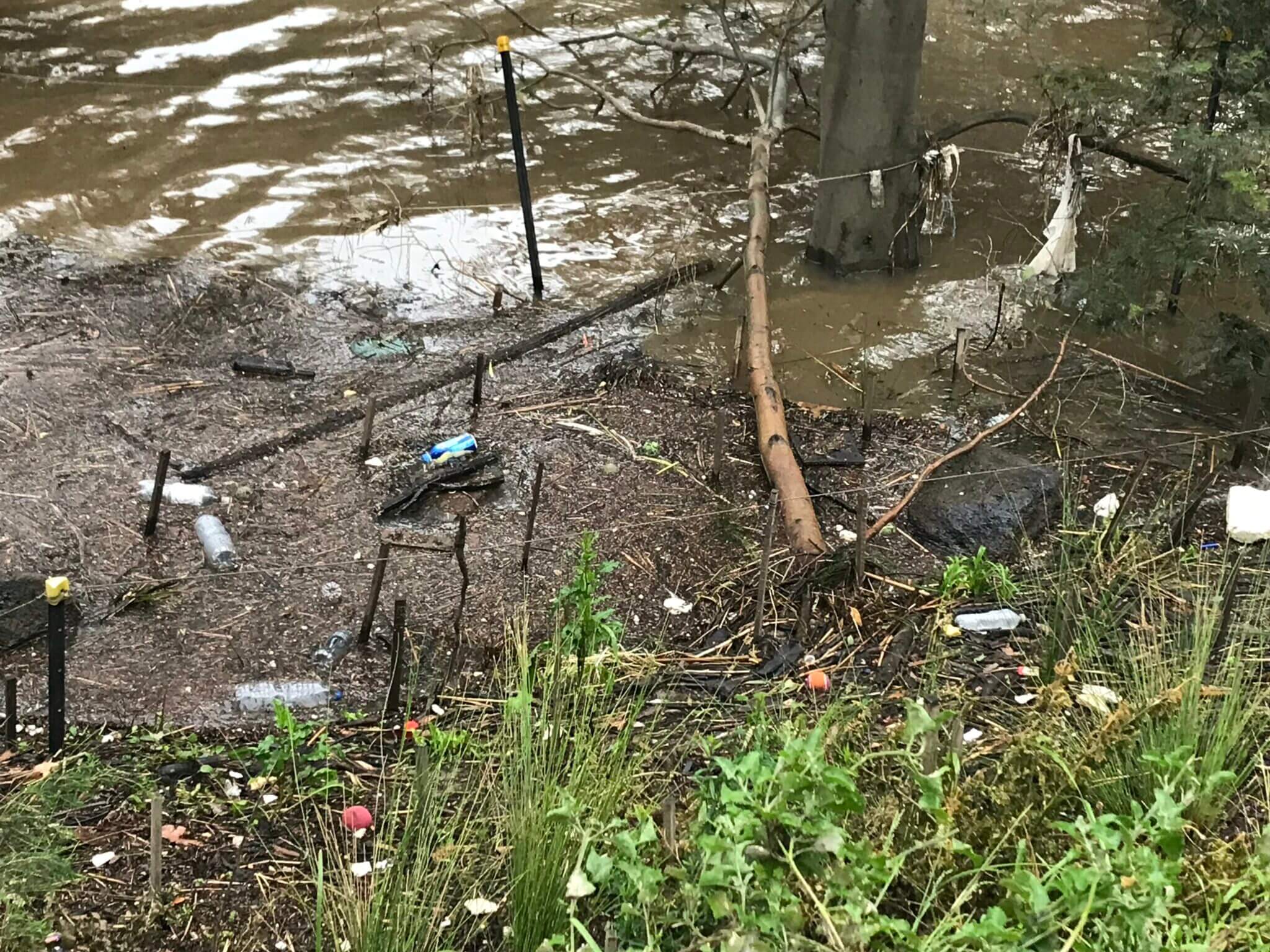
We’ve just walked from my home in Clifton Hill across the Merri Creek bridge under the Eastern Freeway back over the bridge at the confluence of the creek and the river to Dights Falls.
Between us we have one pathetic green plastic garbage bag to fill. ‘Is there any point?’ I ask Christine. ‘Every little bit helps,’ she responds as we go about filling the bag.
We’re now standing by the Wominjeka wall. It’s behind this wall that we identify the remains of the picnic table that was once at Deep Rock (some 500 metres upstream). It was at this table that I collected the very first love story.
The flood waters had carried it away and hurled it over Dights Falls and lodged it here. It’s probably retrievable but is it repairable?
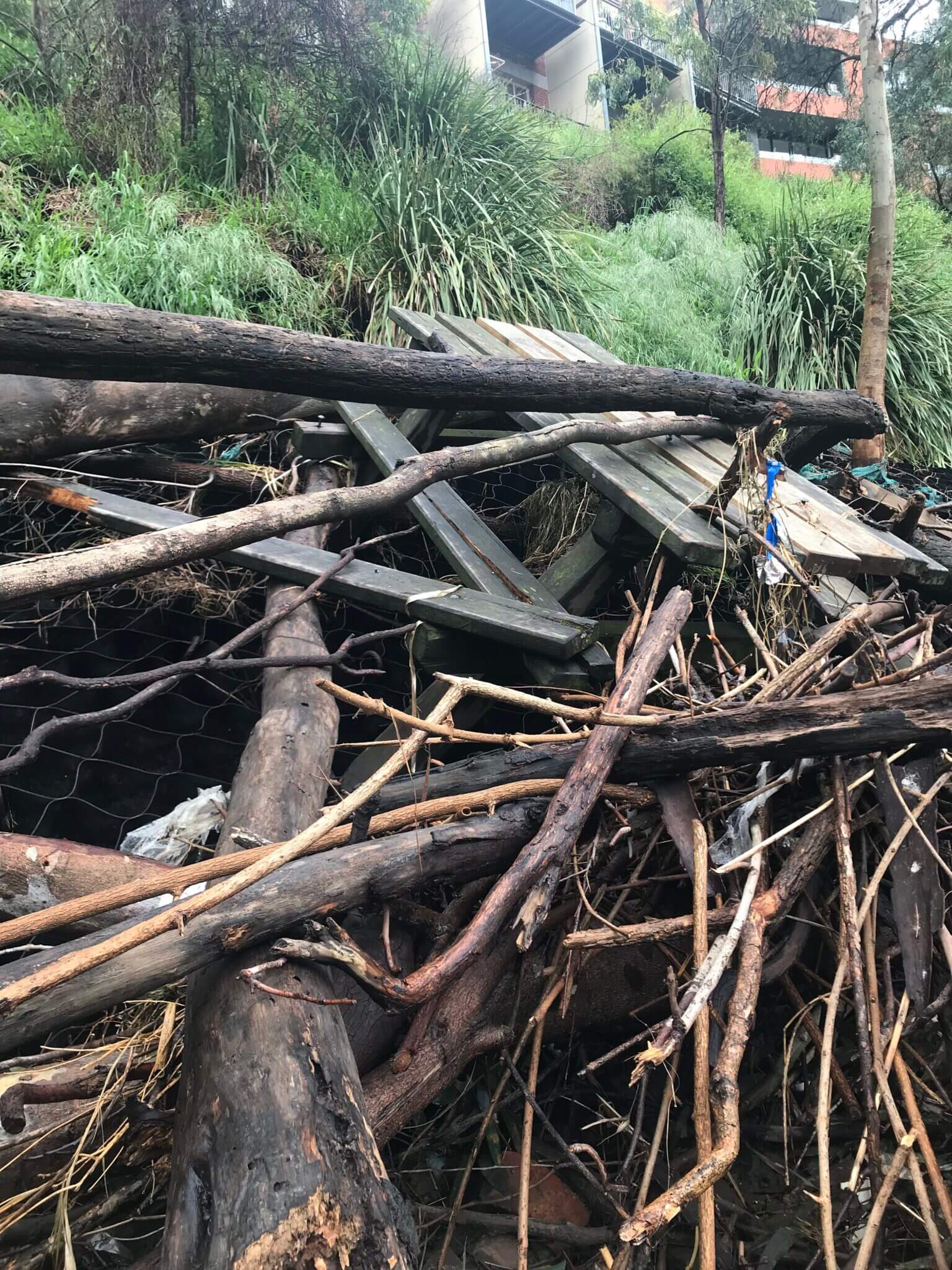
After a while, as we keep walking, my grief and despair turns into anger and bewilderment.
Why is the Birrarung filled with plastic?
Who is responsible for it?
And who should be held accountable?
One thing I know for sure, is that the Victorian Government, Melbourne Water, Vic Parks, local councils and the companies who produce single-use plastics must be held accountable.
They are the ones who have allowed this to happen.
Relying on the goodwill of citizens and communities to clean up the Birrarung is not the solution.
The solution is to stop the pollution at its source. These organisations have the power to solve the problem—but do they have the will?
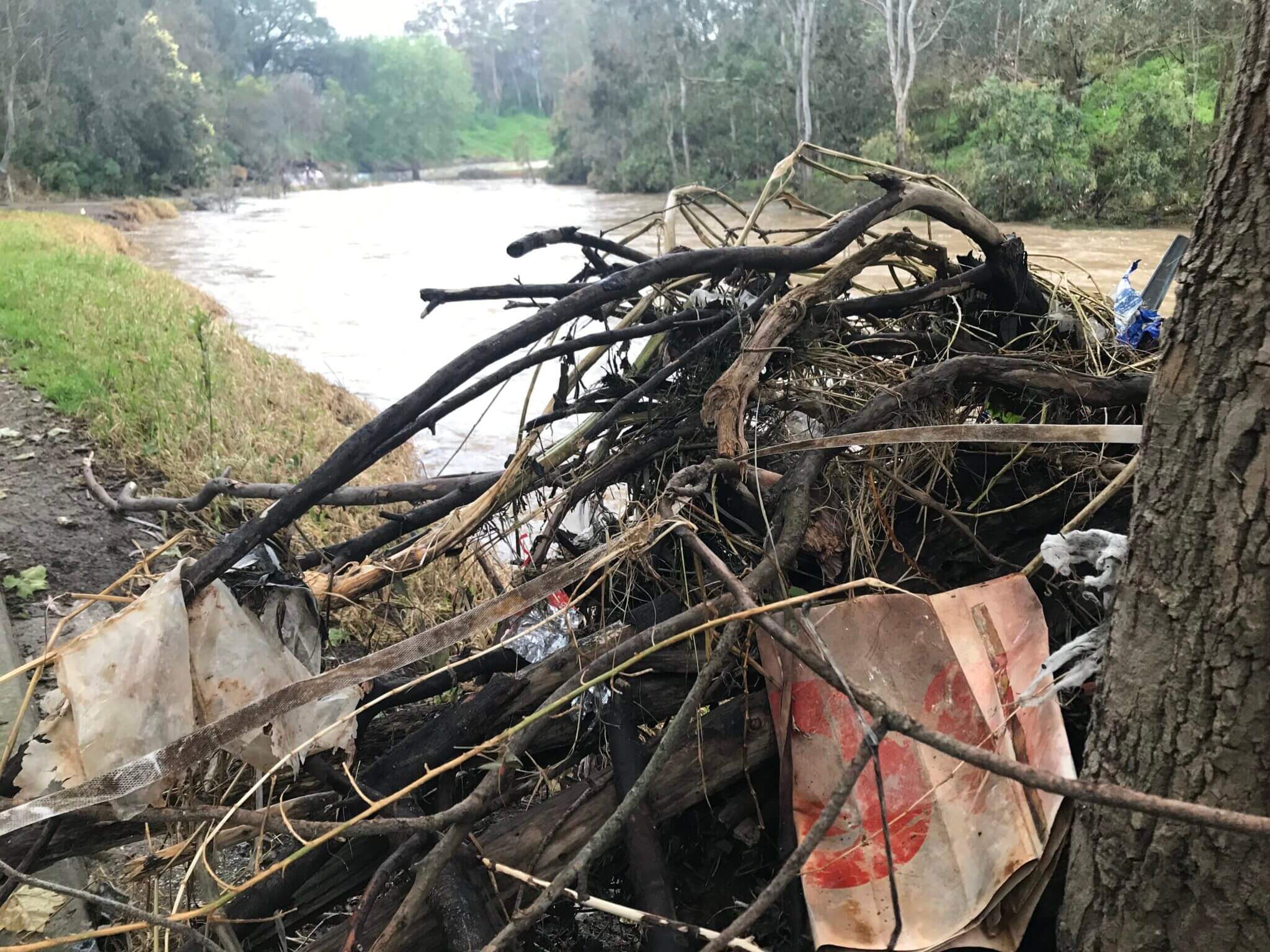
Having said this, I’m also an advocate for citizens and communities choosing a section of the river to care for. It’s the loveliest way to give back to a river that gives us so much.
For me, it’s the section from my sit-spot in the Indigenous garden at the confluence of Merri Creek and the Birrarung, to my swim-spot at Deep Rock.
Some six weeks after this first sorrowful sojourn, the trees are still filled with plastic and most of it is inaccessible by foot.
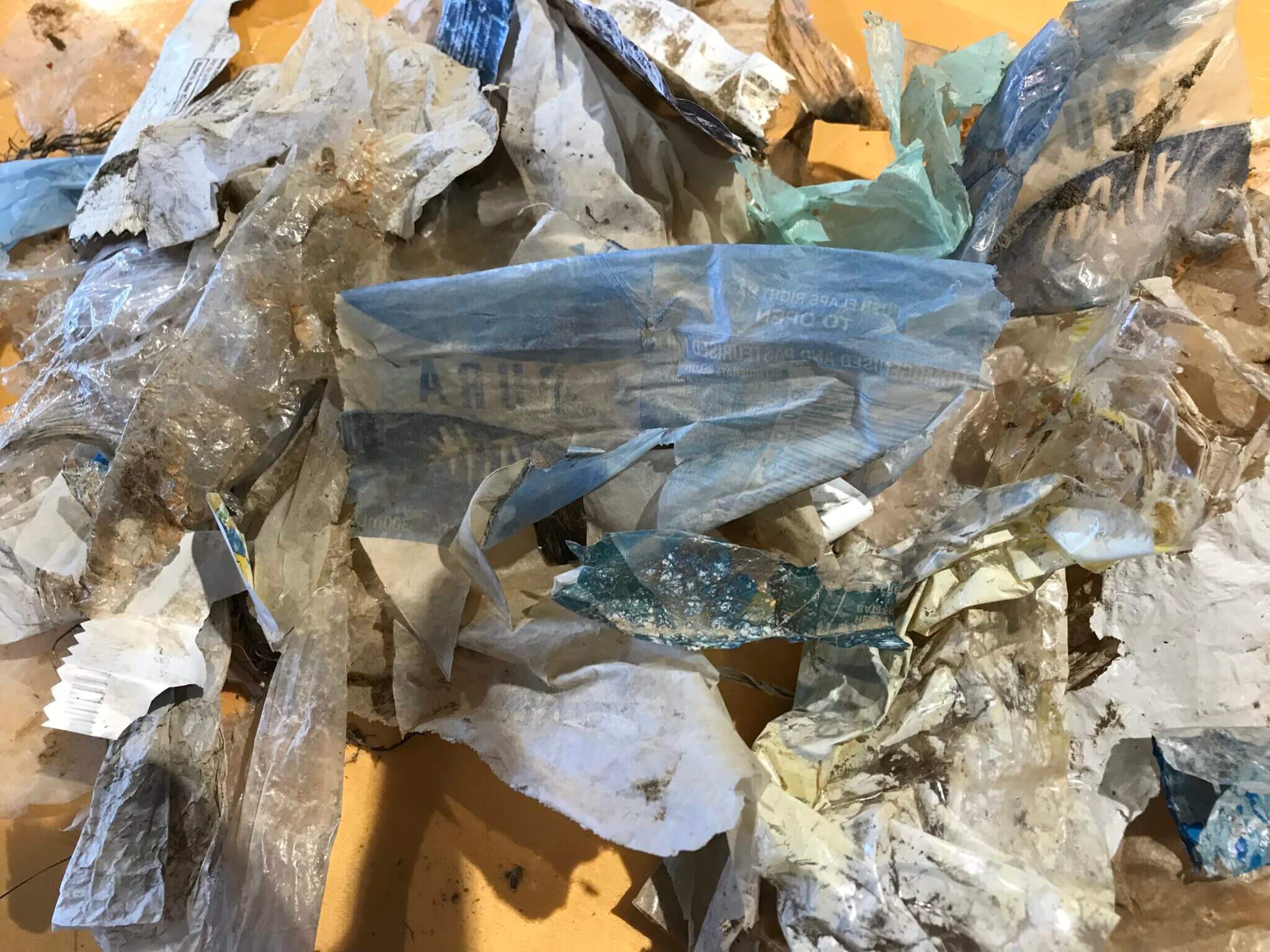 The fine plastics collected from the trees at my sit-spot.
The fine plastics collected from the trees at my sit-spot.
We decide to take local action and mobilise the community to conduct a kayak clean-up of the section of the river from the confluence to Deep Rock.
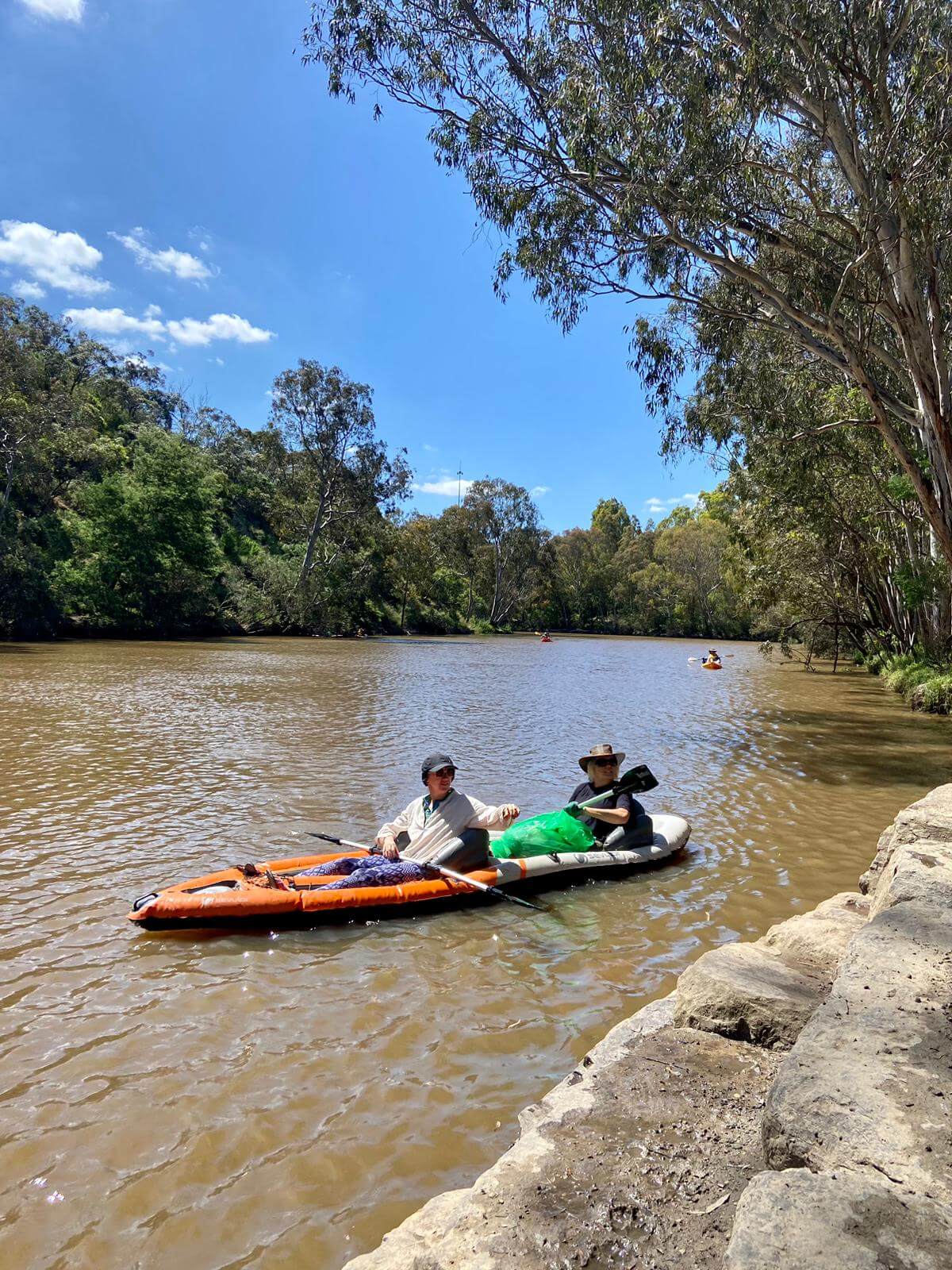 Holly Jones-Amin and Carolyn Tate on a kayak clean-up with Ian Rutherfurd and friends in the distance.
Holly Jones-Amin and Carolyn Tate on a kayak clean-up with Ian Rutherfurd and friends in the distance.
It’s amazing what 17 people can achieve in just a few hours. With eight people in kayaks and nine people on the ground, we manage to clear every riverside tree of plastic. That’s about 10 bags and 20 kilograms of plastic bottles, cans, dog poo bags, tennis balls, fine plastic—and even a fire extinguisher.
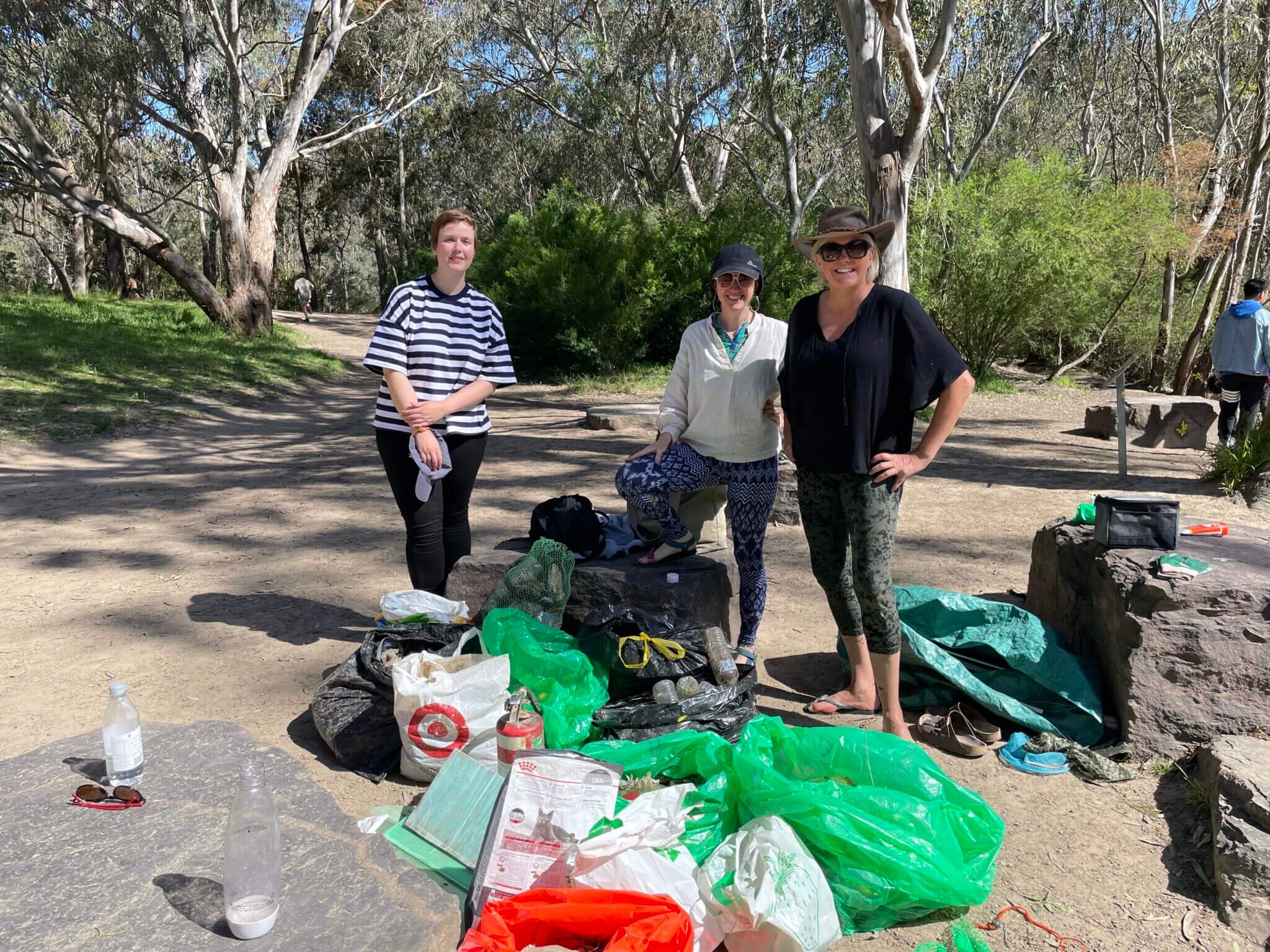 Christine McFetridge, Holly Jones-Amin and Carolyn Tate with our clean-up haul.
Christine McFetridge, Holly Jones-Amin and Carolyn Tate with our clean-up haul.
Today, as I stroll down to my sit-spot and swim-spot and give thanks for this stunning river, which I hope is breathing just that little bit easier because of these 17 wonderful humans, I also feel sad that it’s a never-ending story.
It’s a fact, that any day now, we could be right back where we started—cleaning it all up again.
So while we continue to clean up, we must also demand that this pollution is stopped at its source.
We must demand that the companies who produce these plastics in the first place, solve this problem. It’s their responsibility—not ours. They cannot rely on the goodwill of the people to keep cleaning up the plastic pollution that they’ve created.
So, I’m still asking those three questions and I won’t stop.
Why is the Birrarung filled with plastic?
Who is responsible for it?
And who should be held accountable?
Love your river, support your Riverkeeper by becoming a member or with a one-off or monthly donation.
Story by Carolyn Tate
